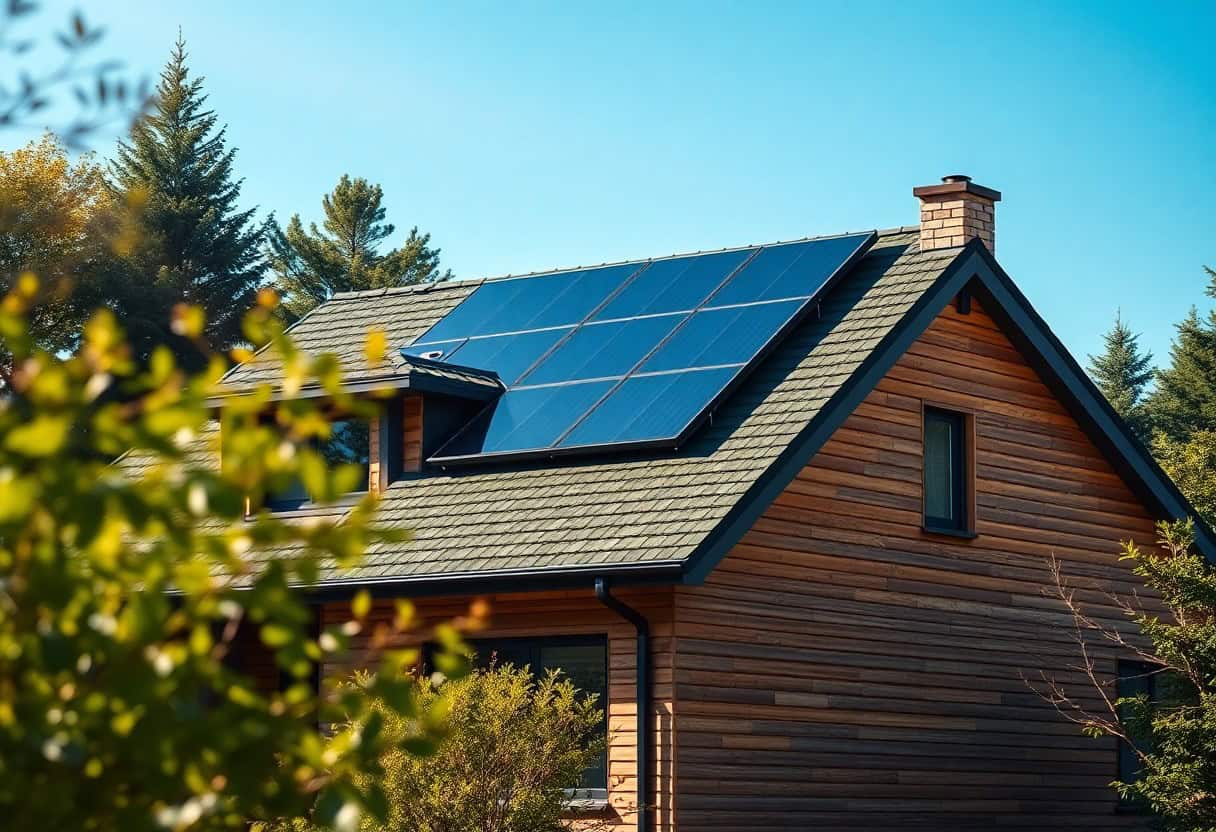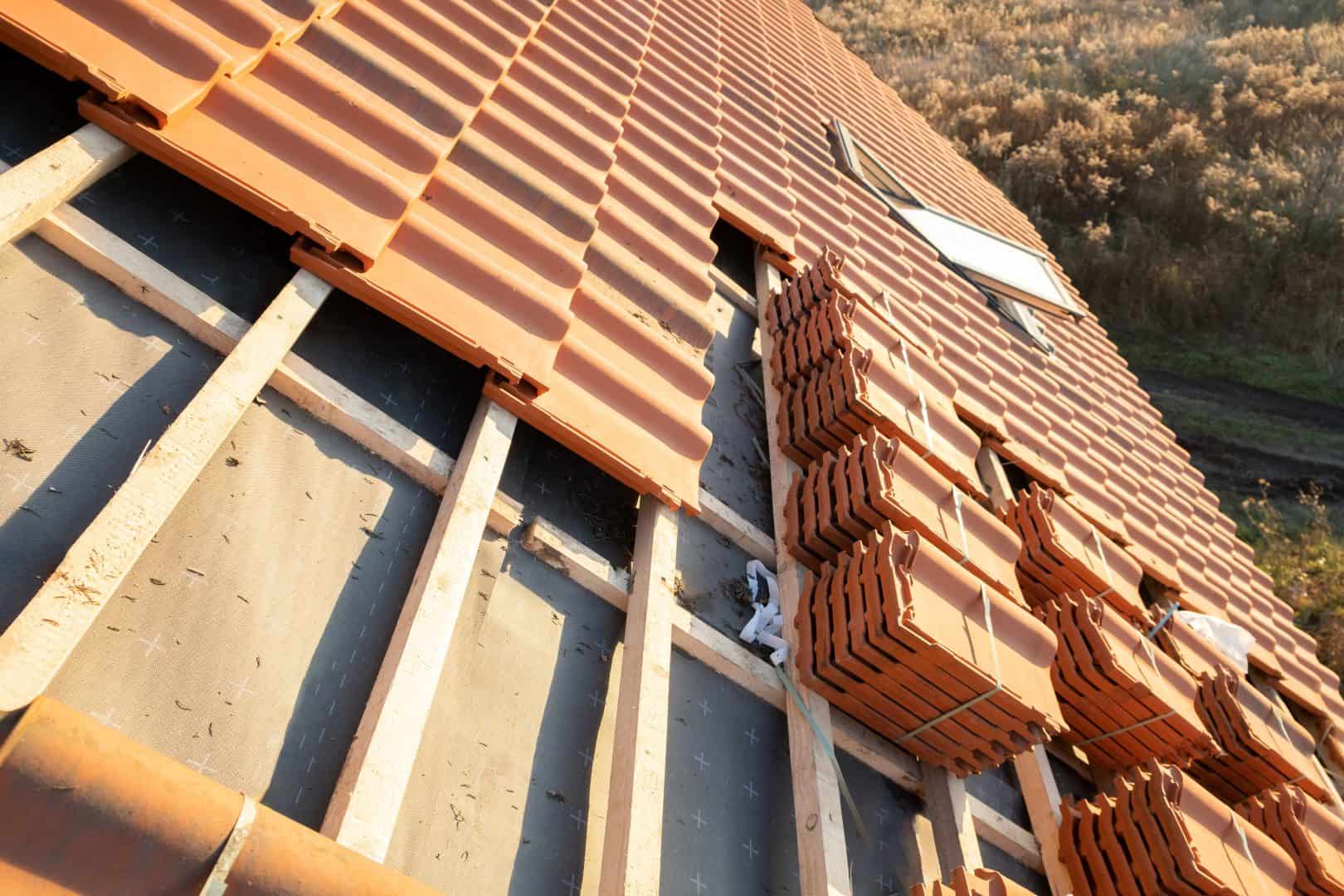Are there energy-efficient roofing options?
Fill Out The Form And We'll Get Back To You

Most homeowners are increasingly seeking ways to reduce their energy consumption and lower utility bills, making energy-efficient roofing an important consideration. Exploring various roofing materials and technologies can significantly impact your home’s energy performance and comfort. In this post, you will discover the most effective energy-efficient roofing options available, along with their benefits and how they can contribute to a more sustainable living environment. Understanding these choices can help enhance your property while promoting energy conservation.
Key Takeaways:
- Energy-efficient materials: Opt for roofing materials that provide better insulation, such as metal or slate, which can significantly reduce energy consumption.
- Reflective coatings: Consider using reflective roof coatings that minimise heat absorption, keeping buildings cooler and reducing reliance on air conditioning.
- Green roofing: Explore the benefits of green roofs, which not only enhance insulation but also promote biodiversity and can improve air quality.
Understanding Energy Efficiency in Roofing
For homeowners seeking sustainable solutions, understanding energy efficiency in roofing is crucial. Energy-efficient roofs can reduce your home’s overall energy consumption, leading to lower utility bills and a smaller environmental footprint. By selecting the right materials and design, you can maximise your home’s comfort and reduce reliance on heating and cooling systems, ultimately enhancing your property’s value.
Definition and Importance
To comprehend energy efficiency in roofing, it encompasses the ability of roofing materials to reflect or absorb heat, influencing the overall energy consumption of your home. This is significant as it directly impacts your comfort levels and energy bills, making it integral to consider when undertaking roofing projects.
Energy Performance Ratings
The effectiveness of roofing materials is often quantified using energy performance ratings, which evaluate their insulation properties and heat resistance. These ratings help you identify which products will provide superior performance and energy savings for your home.
Considering energy performance ratings can significantly influence your roofing choices. These ratings assess various factors, including thermal resistance (R-value) and solar reflectance, enabling you to make informed decisions. By selecting materials with high performance ratings, you not only optimise your home’s energy efficiency but also contribute to a more sustainable future. Therefore, when comparing options, pay close attention to these ratings to ensure that your investment leads to long-term benefits in energy savings and comfort.
Types of Energy-Efficient Roofing Materials
It is important to consider various energy-efficient roofing materials that can reduce your energy costs. Here are some popular options:
- Metal Roofing
- Slate Tiles
- Clay or Concrete Tiles
- Composite Shingles
- Green Roofs
This variety ensures that you can find the best solution for your home. For more information on Best Energy-Efficient Roofing | Types of Cool Roofs, explore different choices available in the market.
| Metal Roofing | Durable and highly reflective |
| Slate Tiles | Long-lasting and eco-friendly |
| Clay or Concrete Tiles | Offers great insulation |
| Composite Shingles | Cost-effective with versatility |
| Green Roofs | Provides natural insulation |
Cool Roofing
On sunny days, a cool roof can significantly lower your home’s temperature by reflecting sunlight and absorbing less heat. These roofs are typically coated with reflective material, making them a popular choice in warmer climates. Opting for a cool roof can enhance your comfort while lowering your energy bills.
Reflective Shingles
Shingles are another excellent option for improving your home’s energy efficiency. They come in reflective varieties designed to deflect sunlight, reducing heat absorption. This can help maintain a cooler indoor environment, especially during the hot months.
This innovative roofing solution can not only contribute to energy savings but also prolong the life of your roof by minimising thermal expansion and contraction. By selecting reflective shingles, you ensure a comfortable atmosphere while enhancing your home’s overall energy efficiency.
Advantages of Energy-Efficient Roofing
Many homeowners are turning to energy-efficient roofing options for a variety of benefits beyond mere aesthetics. These roofs can significantly reduce your energy consumption, leading to lower utility bills. For additional information about energy-efficient roofing options, you can explore What is the Most Energy-Efficient Type of Roof? With improved insulation and reflective materials, energy-efficient roofs not only potentially decrease your heating and cooling expenses but also enhance the overall comfort of your home.
Reduced Energy Costs
Against rising energy prices, opting for energy-efficient roofing can be a smart financial decision. These roofs help regulate your home’s temperature, leading to lower reliance on heating and cooling systems. As a result, you can enjoy significantly reduced energy costs that translate into long-term savings for you.
Environmental Benefits
About the impact of energy-efficient roofing on the environment, these roofs contribute to lower carbon emissions and reduced reliance on fossil fuels. By using materials that reflect sunlight, your home can stay cooler and require less energy for air conditioning, thus decreasing your carbon footprint and promoting sustainability in your community.
And by investing in energy-efficient roofing, you are also playing a vital role in resource conservation. These roofing systems often use sustainable materials, which helps in reducing waste and promotes a healthier environment. With more people choosing eco-friendly solutions, your choice contributes to a larger movement towards sustainability, encouraging further innovations in energy efficiency.
Factors to Consider When Choosing Roofing Options
All energy-efficient roofing options come with various considerations that can influence your choice. Here are some factors you should think about:
- Your local climate
- Building materials
- Cost and budget
- Longevity and maintenance
- Impact on property value
This thoughtful approach will ensure you select the best roofing solution. For comprehensive insights, check out Everything You Need to Know About Energy-Efficient Roofing.
Climate Compatibility
Roofing materials vary in their effectiveness depending on the climate in which you live. For example, reflective roofing can significantly reduce heat absorption in hotter regions, while materials with higher insulation qualities are ideal for colder areas. Your choice should align with local weather patterns to maximise energy efficiency.
Building Design and Orientation
Options for your roofing must also take into account the design and orientation of your building. The roof’s slope, shape, and position can dramatically impact energy efficiency, influencing how much sunlight it receives and how air flows through your home.
A well-oriented roof can enhance energy conservation by harnessing natural sunlight for heating, while strategic overhangs can provide shade during warmer months. Evaluating your building’s unique design features allows you to tailor your roofing choice to optimise energy performance.
Installation and Maintenance of Energy-Efficient Roofs
Now that you’ve selected an energy-efficient roofing option, correct installation and regular maintenance are key to maximising its benefits. Proper installation will ensure that your roof functions optimally, reducing energy consumption over the lifetime of your roof. Regular inspections and upkeep will further enhance its efficiency, keeping your home comfortable and your energy bills low.
Professional Installation Considerations
Roofs require precise fitting and alignment, making professional installation crucial for achieving energy efficiency. Engaging experienced contractors who understand the specifications of your chosen materials will not only ensure compliance with local building codes but also enhance the overall performance of your roofing system.
Long-Term Maintenance Tips
One effective way to maintain your energy-efficient roof is through consistent inspections and maintenance. Regularly check for signs of wear and tear, clean debris, and ensure that insulation remains intact. Here are some tips for your roof’s upkeep:
- Inspect the roof at least twice a year.
- Clear gutters and downspouts to prevent water damage.
- Address any small repairs promptly to prevent larger issues.
This proactive approach helps preserve the energy efficiency of your roof.
Installation of an energy-efficient roof is just the beginning; ongoing, attentive maintenance is vital for longevity and performance. You should consider scheduling professional inspections conditionally to ensure all elements function effectively. Here are additional maintenance pointers:
- Trim overhanging branches to avoid damage.
- Monitor for signs of leaks or moisture in your attic.
- Ensure insulation is properly installed, as this impacts energy use.
This continuous effort will help you maintain a robust energy-efficient roofing system.
Cost Analysis of Energy-Efficient Roofing
Not only do energy-efficient roofing options contribute positively to the environment, but they also offer a compelling financial perspective. When considering replacing or installing a roof, you should evaluate both the initial costs and the potential savings on energy bills over time. Understanding the total cost of ownership is vital in making an informed decision that aligns with your budget and long-term financial goals.
Initial Investment vs. Long-Term Savings
Cost analysis involves weighing the initial investment of energy-efficient roofing materials against the long-term savings you can expect through reduced energy consumption. While upfront costs may be higher, the long-term benefits in reduced utility bills often offset these expenses, resulting in savings for you as a homeowner over the life of the roof.
Incentives and Rebates
Roofing options for energy efficiency may also come with various incentives and rebates that can alleviate some of the initial financial burden. Many local governments and utility companies offer programmes designed to encourage homeowners to invest in energy-efficient technologies.
Savings can be significantly bolstered through local or federal incentives, which can include tax credits, rebates, or grants. By researching available programmes in your area, you may discover substantial discounts that reduce your initial investment, making energy-efficient roofing an even more attractive option for your home. Engaging with professionals who understand these incentives can maximise the financial benefits as you move forward with your roofing project.
Summing up
Ultimately, you have a variety of energy-efficient roofing options to consider, including reflective materials, green roofs, and high-quality insulation. These solutions not only help reduce your energy consumption but can also prolong the lifespan of your roof and enhance your property’s overall value. By selecting the right roofing materials and techniques, you can significantly lower your utility bills and contribute to environmental sustainability, making it a worthwhile investment for your home.
FAQ
Q: Are there energy-efficient roofing options available for my home?
A: Yes, there are several energy-efficient roofing options that can help reduce energy consumption and improve the overall comfort of your home. Popular materials include cool roofing products that reflect more sunlight and absorb less heat, such as reflective shingles or metal roofs with a high solar reflectance rating. Additionally, materials like slate, tile, and certain types of asphalt shingles are designed to provide better insulation, which can help keep your home cooler in summer and warmer in winter.
Q: How do energy-efficient roofs save on energy costs?
A: Energy-efficient roofs save on energy costs primarily through improved insulation and reflective properties. By reflecting more sunlight, these roofs can reduce the amount of heat entering your home during hot weather, leading to lower air conditioning usage and decreased energy bills. Additionally, good insulation properties help maintain desired indoor temperatures in colder months, resulting in less reliance on heating systems. Over time, the cumulative savings can be significant, often offsetting the initial investment in energy-efficient roofing materials.
Q: What should I consider when choosing an energy-efficient roofing option?
A: When choosing an energy-efficient roofing option, consider factors such as the climate in your area, the roof pitch, the material’s reflectivity rating, and local building codes. It’s also important to assess the lifespan and warranty of the roofing product, as well as its environmental impact. Consulting with a roofing professional can provide insights tailored to your specific situation. Additionally, consider the aesthetic appearance and how it complements your home’s design, since you want to achieve both energy savings and visual appeal.
Re-Roof of Bungalow
The guys made a fantastic job of replacing the roof on our bunglaow. They were fasy, relaible and excellent value for money.
Chimney Removal
We employed Wrights Roofs to take down our very old chimney – tht had seen better days. They carefully removed and made good the area where the chimney was. Really impressed.
New Roof
We had an extension built and Wrights came and put a new roof on. They were brilliant, no fuss, great value for money. Thank you.
Roofs, Flat Roofs Chimneys and Solar Panels
If you need roof work on your home, please complete the form or call us today.

